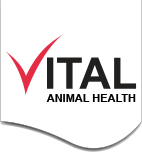
Heifer Management
On average heifers should be targeting growth rates of around 0.75kg body weight gain per day (for Holstein/Friesians). This rate of growth is optimal for frame and udder development, and ensures heifers achieve adequate body weights prior to first service. For other breeds, reduce this back proportionally depending on adult body weight. For example, a Jersey cow is generally around 70% of the body weight of a Holstein/Friesian. Therefore, a target growth rate of 0.5kg/day can be used.

Feeding for fertility
Young heifers before puberty have a limited capacity for dry matter intake due to their small rumen size. Because of this, a large portion of their nutrients must come from concentrates as well as high quality forages (poor quality fodder is bulky and will reduce intake) which should be fed ad-lib. It is important that good quality, longer fibre forage is supplied in order to maintain rumen health and encourage rumen growth. As the heifer grows so does the rumen, and dependency on forage will increase. Heifers need to learn to utilise high levels of forage during the rearing period in order to prepare them for entry to the milking herd, where they will be required to consume large quantities of forage in order to meet the nutritional demands of lactation.
A heifer’s forage intake can be maximised by ensuring it is of a good quality and is very palatable. Pre-service, you want to maximise conception rates therefore the heifer needs sufficient energy and protein to meet her needs, as well as the correct mineral balance from a supplement such as Vital Joto. Energy is needed for conception, implantation and growth and is crucial in pre- service heifers. After service, you should ensure the heifer is still fed a diet adequate in energy, protein and minerals. You should also monitor the heifer for signs of heat, indicating a failed service. If the heifer appears to be having trouble conceiving, you should look at her diet and ensure all her requirements are being met; it may also be helpful to use natural service, as this has a higher conception rate.

It is essential to supplement heifers with a good quality mineral supplement such as Vital Joto. Energy and protein from fodder and concentrates are the first priority, but without a well- balanced mineral supplement, these nutrients cannot be fully utilised. For optimum growth and fertility, but most importantly efficiency, a specific heifer supplement such as Vital Joto should be fed to ensure the key minerals and trace elements required by growing heifers are available. Vital Joto contains no intentionally added iron, three types of copper compound to combat copper "lock-up" and is specifically formulated for heifers reared in Kenya. The reason why supplementation is so important is that copper deficiency is ubiquitous in Kenya and a lack of copper reduces the energy metabolism of the animal. Low energy metabolism equates to low performance, low fertility and low growth. This is particularly important in heifers as they need to be served at a weight no less than 55-60% of their mature weight, and should calve down when they reach 85-90% of their mature weight. To give an example, a Friesian cow with a potential body weight of 625kg should be served at a minimum body weight of 345kg, to calve down at a minimum weight of 530kg. Ideally, body weight should be used, however, weight bands can also be used to monitor growth rates. Heifers that are small and calve down at a lower body weight will never ‘catch up’ with their growth. The nutrients she consumes will be partitioned to her unborn developing calf and then milk production, rather than her own body development. This not only affects her potential body weight, but also her udder development and therefore her future milk yield. A higher body weight at first calving is linked to a higher milk yield, not just in the first lactation but in subsequent lactations also. Any compromise in growth at this stage of heifer growth has a huge impact on the future productivity of that animal. It is therefore essential to ensure heifers have optimal growth rates for future performance and udder development.
Feeding through pregnancy
During early pregnancy, you should keep feeding good quality forage to ensure the rumen is healthy and functioning to the best of its ability. It is also important to monitor a cow’s energy balance; this can be done using body condition scoring. If the cow is losing body condition, she is not being provided with enough energy. If she is gaining condition, she is being overfed. Another good indicator is rumen fill, which will show whether or not the heifer is eating enough.
A good mineral balance is also important, as they are needed for both the growth of the foetus and the continued growth of the dam so Vital Joto should continue to be fed up until the last two months of the pregnancy where a specific transition cow formulation, Vital Dry should be fed. At this stage lucerne should be restricted due to its higher calcium levels. In late pregnancy, the size of the calf and its fluids will physically restrict the size of the rumen. This will limit the heifer’s feed intake, so at this stage the diet needs gradually increasing energy levels to support growth and to make up for the reduced forage intake.
It is, however, important that forage is still being fed in order to prevent acidosis and encourage the rumen to remain as large as possible. Monitoring body condition is also important at this stage in order to avoid over-conditioning. A fat heifer at calving will have a reduced feed intake post-calving, making the likelihood of severe negative energy balance and ketosis higher as well as reducing her milk yield and leading to subsequent fertility problems.


